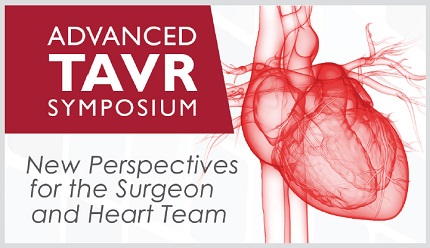
STS News, Fall 2021 — More than 300 registrants and faculty participated in the recent Advanced TAVR Symposium: New Perspectives for the Surgeon and Heart Team, where they joined in-depth discussions on classic and complex topics in the areas of transcatheter aortic valve replacement (TAVR).
A “TAVR in Low-Risk Patients” session explored the landscape of TAVR, highlighting the case of a 65-year-old patient with tricuspid aortic stenosis. Presenters shared insights from the perspective of both a surgeon and an interventional cardiologist, and in the context of a new guideline from the American Heart Association and American College of Cardiology.
During the “Valve-in-Valve TAVR” session, attendees heard the latest clinical data on valve-in-valve procedures, were guided stepwise through the procedure using the BASILICA technique, explored findings on second-valve (TAV-in-TAV) implantation, and learned approaches to balloon valve fracturing.
“Controversies in Bicuspid TAVR” addressed guideline recommendations and bicuspid procedure classifications, compared TAVR and surgery for all bicuspids, and examined the merits of a randomized control study. During the “Alternative Access for Surgeons” session, presenters weighed the merits of transcarotid, percutaneous axillary, transinnominate, and transcaval TAVR and discussed which routes are preferable in different patients.
Identifying TAVR explant as a new specialty for cardiac surgery, moderators and faculty assessed current data on explant procedures, demonstrated techniques for bicuspid aortic valve, self-expanding valve, and sutureless explantation. They also addressed the question, “Would TAVR explant change your point of view on TAVR in low-risk patients?”
In a concluding session on optimizing TAVR, faculty covered topics such as commissural alignment to replicate surgical aortic valve replacement-like results, the necessity of cerebral embolic protection devices, the advent of TAVR for aortic insufficiency, and new techniques and devices on the horizon.
Each session concluded with in-depth live discussions and Q&A, during which attendees, presenters, and panelists shared perspectives, addressed questions, and debated strategies to address professional challenges.
The digital archive of the TAVR Symposium—now available for purchase—includes unlimited access to course materials until September 20, 2022. More details are available at STS.org/TAVR.